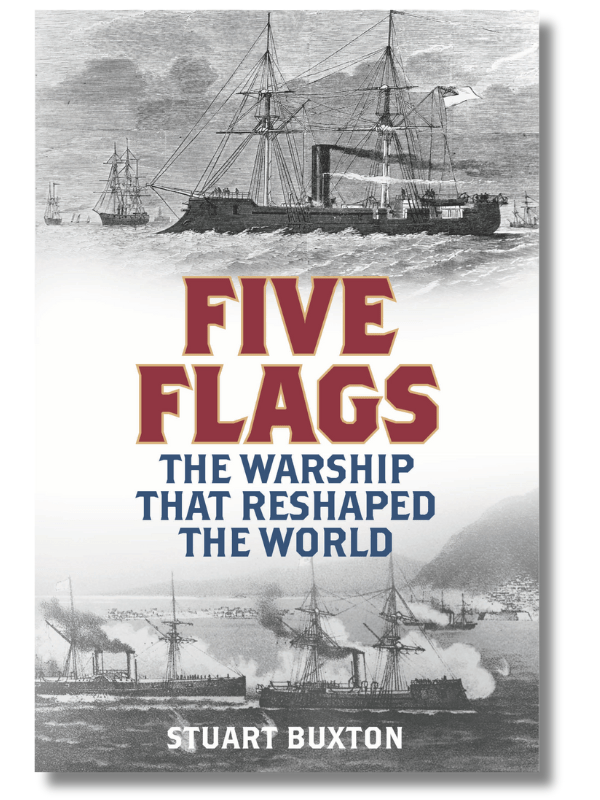Five Flags
by Stuart Buxton
Genre: History / War
ISBN: 9780811777230
Print Length: 256 pages
Reviewed by Phillip Zozzaro
The enlightening story of the life of a battleship
The war between the states was ongoing, and the newly christened Confederate States of America needed to build up their armed forces, particularly their navy.
At the beginning of the Civil War, the confederacy’s interests were represented in England by a man named James Dunwoody Bulloch. Bulloch specialized in allocating Confederate money, but as a Navy Veteran, he knew that the Union forces far outmatched the South in fleet size and capacity. Bulloch was hoping to persuade the British or other sympathetic European countries to help build a ship for them that could make an impact on the escalating war.
European powers often secretly helped one side in foreign wars, even though they stayed officially neutral, but while England and France had ideological and economic reasons to side with the South, they refrained from participating. If England or France built or even sold a warship to the rebels, this could signal an act of hostility to the Union Government overseen by President Abraham Lincoln. They wouldn’t recognize the Confederacy until their forces had proven they could actually win independence.
The French had built an ironclad ship for the Danish, who were involved in a war of their own, but the Danish were unhappy with the deal. So they sold the boat to the Confederacy in 1865. The ship would be christened the CSS Stonewall, but it would ultimately see minimal action during the war between the States.
In Five Flags, author Stuart Buxton skillfully weaves together the diplomatic complexities of multiple nations, showing how one ship can become a pawn in international politics.
The CSS Stonewall would lie dormant until 1867 when a civil war on the other side of the world brought interested parties seeking its use. The soul of Japan was being fought over between the military (Shogun ) and rival political forces, and the Shogun-led government needed an advantageous weapon to lead the way to victory.
But the US would hold off on delivery of the boat as the war raged in Japan and the US desired to remain neutral. In 1869, the newly-named ship Kotetsu was given to the ruling Meiji government.
Five Flags is a riveting history that details the evolution of warfare. Buxton tells a compelling story of how wooden ships went from a commodity to obsolete; the future was in boats that were strong and could travel up and down the East Coast or in the waters off the Gulf of Mexico. “Laird Rams” and other ironclad vessels equipped with heavy guns, such as the Armstrong Gun, possessed the ability to blow Union ships out of the water.
Author Stuart Buxton provides a wealth of information on maritime history here, told in both fact and personal stories of the crew members who served onboard. Five Flags is an fascinating chronicle of the international relationships that determined the ship’s fate.
Thank you for reading Phillip Zozzaro’s book review of Five Flags by Stuart Buxton! If you liked what you read, please spend some more time with us at the links below.
The post Book Review: Five Flags by Stuart Buxton appeared first on Independent Book Review.
